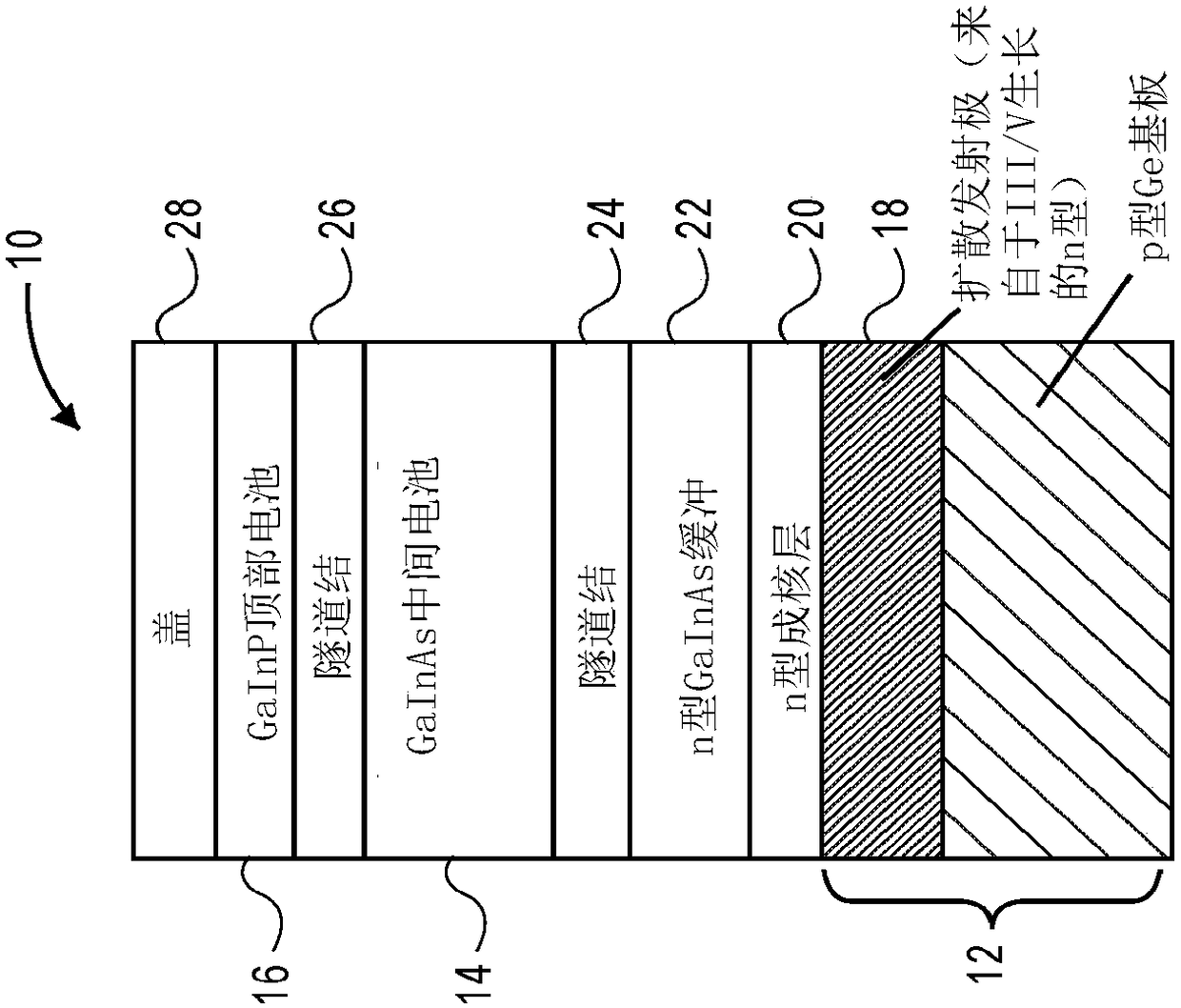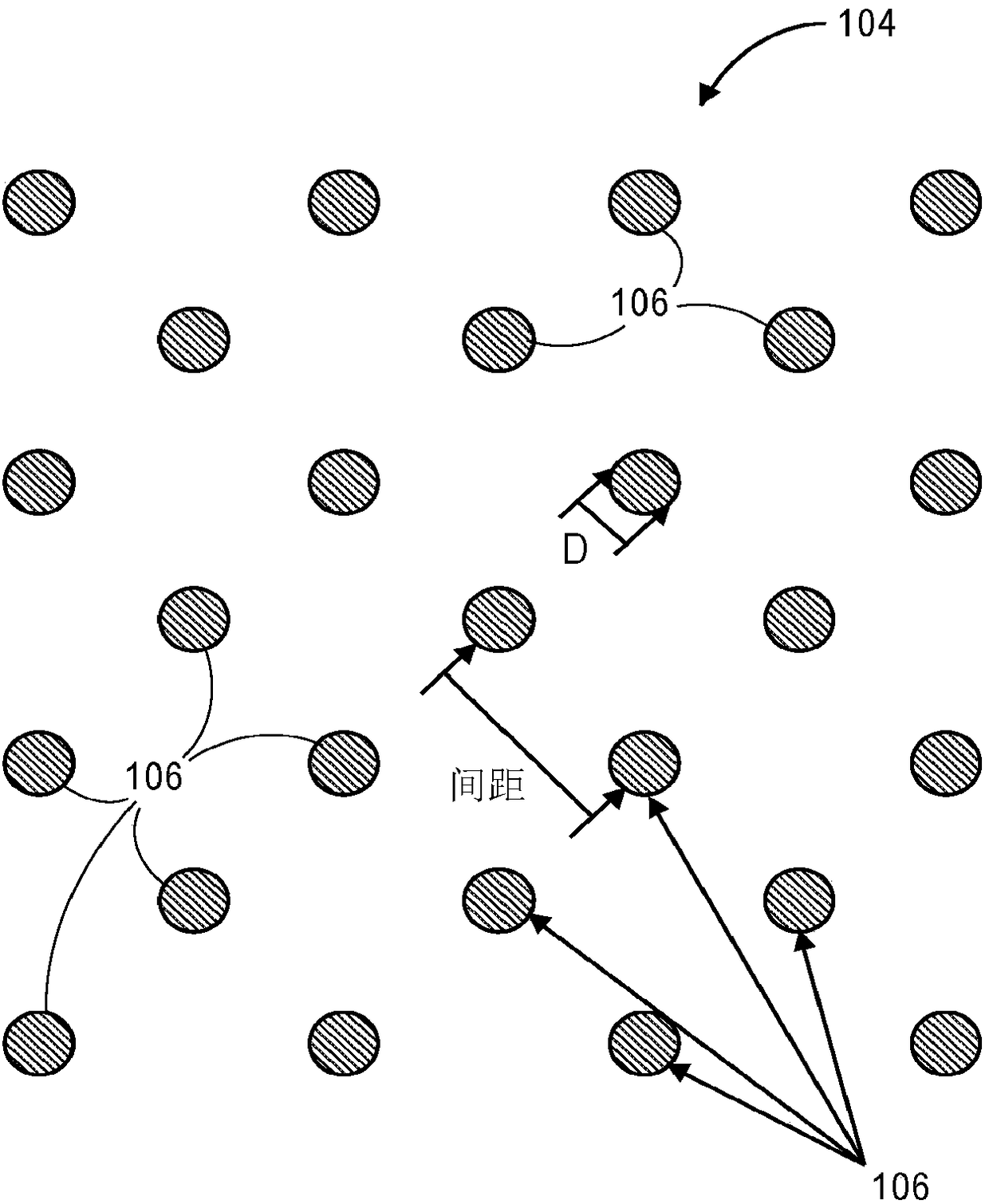Multijunction solar cell having patterned emitter and method of making the solar cell
A technology of solar cells and solar sub-cells, applied in photovoltaic power generation, circuits, electrical components, etc., can solve problems such as reducing the efficiency of solar cells
- Summary
- Abstract
- Description
- Claims
- Application Information
AI Technical Summary
Problems solved by technology
Method used
Image
Examples
Embodiment 1
[0054] Embodiment 1. A multi-junction solar cell comprising: a base substrate comprising a Group IV semiconductor and a dopant of a first carrier type; a patterned emitter formed at a first surface of the base substrate, The patterned emitter includes a plurality of well regions doped with a dopant of the second carrier type in the Group IV semiconductor, the base substrate includes the patterned emitter forming the first solar subcell; and the upper structure includes One or more additional solar subcells above the first solar subcell.
Embodiment 2
[0055] Embodiment 2. The multi-junction solar cell of embodiment 1, further comprising a passivation layer at the first surface of the base substrate positioned between the patterned emitter well regions and comprising a second A carrier type dopant.
Embodiment 3
[0056] Embodiment 3. The multijunction solar cell of embodiment 1 or 2, wherein the Group IV semiconductor comprises a material selected from germanium and silicon.
PUM
 Login to View More
Login to View More Abstract
Description
Claims
Application Information
 Login to View More
Login to View More - R&D Engineer
- R&D Manager
- IP Professional
- Industry Leading Data Capabilities
- Powerful AI technology
- Patent DNA Extraction
Browse by: Latest US Patents, China's latest patents, Technical Efficacy Thesaurus, Application Domain, Technology Topic, Popular Technical Reports.
© 2024 PatSnap. All rights reserved.Legal|Privacy policy|Modern Slavery Act Transparency Statement|Sitemap|About US| Contact US: help@patsnap.com










